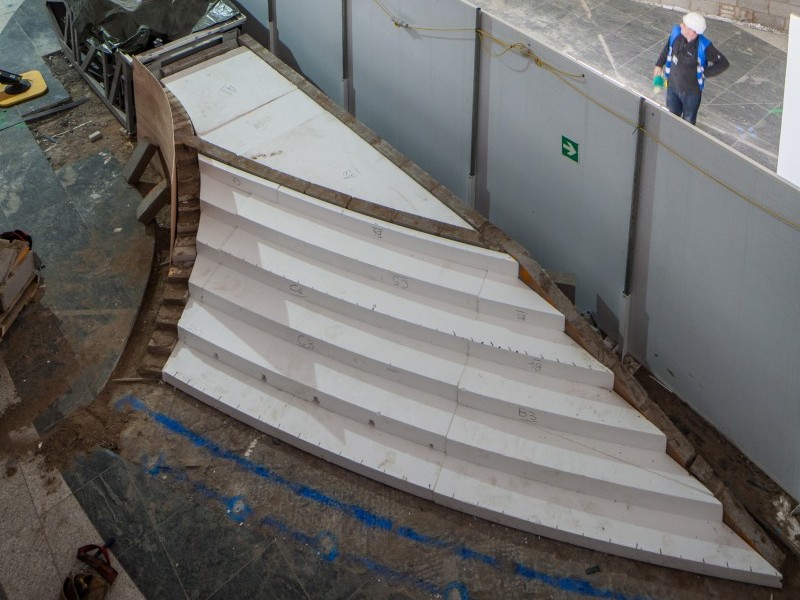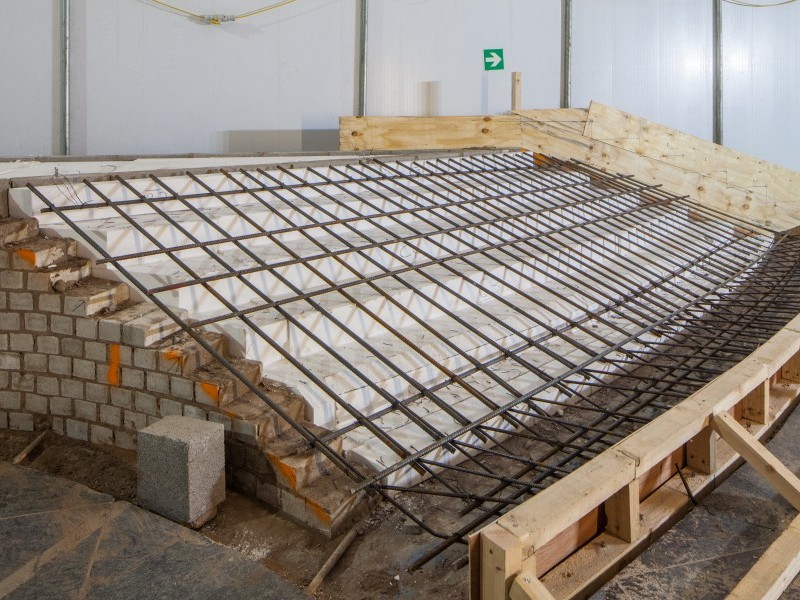Filcor (Expanded Polystyrene) is commonly used as a lightweight material for forming openings and voids within concrete structures. The use of Filcor void formers reduces the weight of the structure when left in-situ or alternatively can be used for temporary applications as part of a formwork system.
Features
- A range of compressive strengths available
- Lightweight and easy to handle
- Available as standard sheets or blocks
- Can be profiled to customer requirements
- Provides a high degree of insulation
- Flame Retardant (FR) properties
The versatility of Filcor means that any shape, size or profile can be manufactured with relatively short lead times. In addition, a range of materials of increasing compressive strengths are available to meet the loading requirements of the application, whilst also providing the most cost effective solution.
Applications
Filcor can be used for a variety of void forming applications for the formation, shaping and positioning of openings to reduce the weight of concrete structures. The product can be manufactured in standard sheet sizes or alternatively profiled to the installer’s exact requirements.
Suitability
Physical Properties:
| Manufactured BS EN 13163:2012 Physical Properties | Filcor 20 | Filcor 45 | Filcor 70 | Filcor 90 | Filcor 100 | Filcor 120 | Filcor 140 | Filcor 160 | Filcor 190 |
| Compressive Strength at 1% strain (kPa) | 20 | 45 | 70 | 90 | 100 | 120 | 140 | 160 | 190 |
| Nominal Density (kg/m3) | 15 | 20 | 25 | 30 | 35 | 40 | 45 | 50 | 55 |
| Thermal Conductivity Value +W/mK | 0.038 | 0.036 | 0.035 | 0.034 | 0.033 | 0.033 | 0.033 | 0.033 | 0.033 |
Filcor complies with both BS EN 13163:2012 and BS EN 14933:2007
Environmental facts about Filcor EPS

The manufacture of Filcor is a low pollution process. Steam is he key component and the water is re-used many times. There is no waste in the process as all cut offs or rejects are recycled.

Filcor is 98% air. This makes Filcor a uniquely resource-efficient material with small carbon footprint.

Filcor is HFC, CFC and HCFC free and Pentane is used as its blowing agent. Pentane has a low Global Warming Potential* (GWP) of less than five. (The EU does not register pentane as a substance hazardous to human health or environment.)

Styrene, used in the manufacture of Filcor, occurs naturally in many commonplace items including strawberries, beans, nuts, beer, wine, coffee beans and cinnamon
Filcor is 100% recyclable. As a single polymer, Filcor is straightforward to recycle and is recyled into items such as replacement hardwood decking or garden furniture and coat hangers
.jpg?v=1669292955)
.jpg?v=1669292965)
.jpg?v=1669292996)
User Notice
To view our technical documents, we recommend using alternative internet browsers to Chrome (such as Microsoft Edge, Internet Explorer, or Firefox) whilst Google rectify their Chrome browser and PDF document compatibility issue. We apologise for any inconvenience caused.



